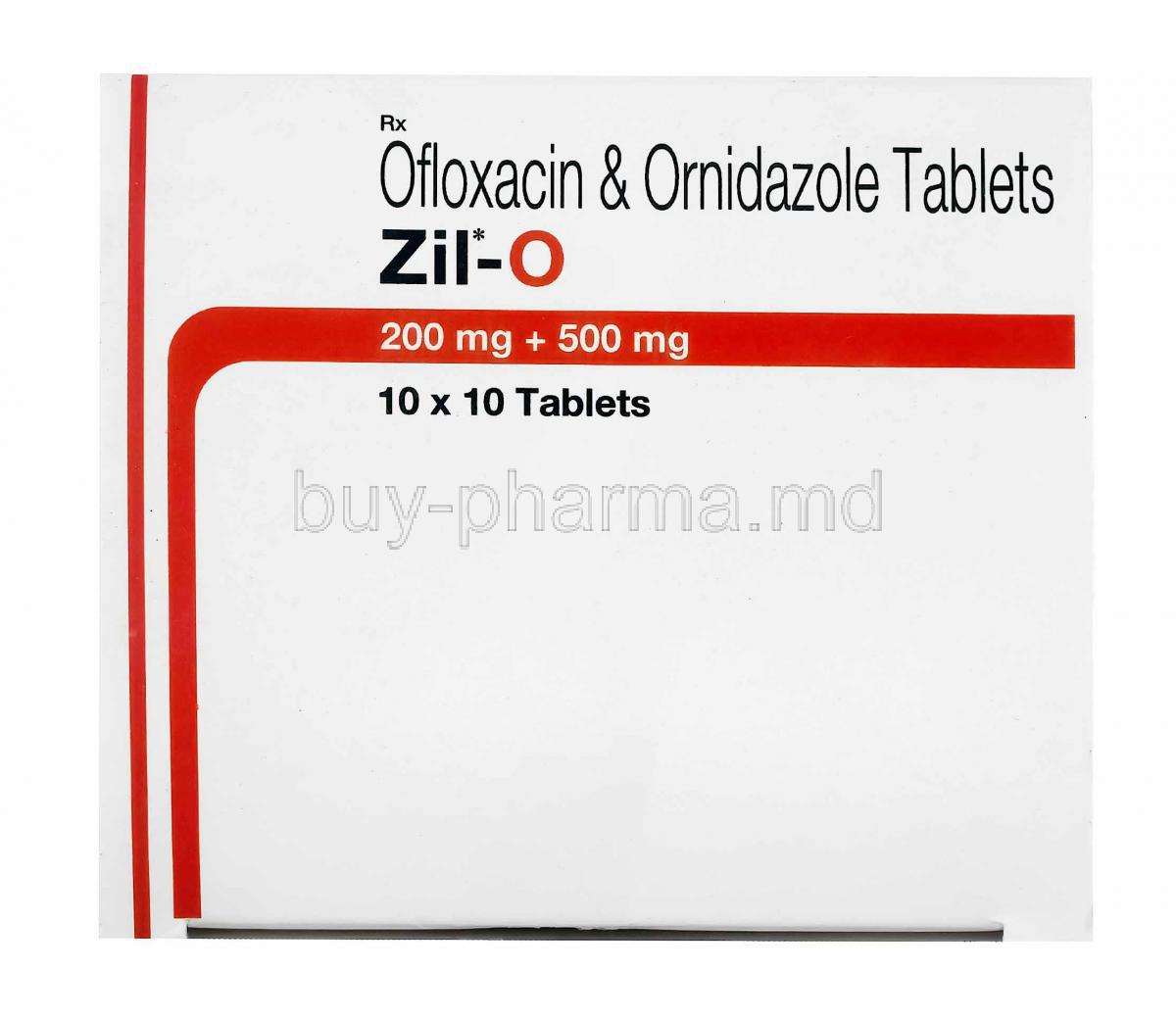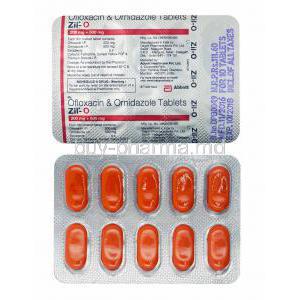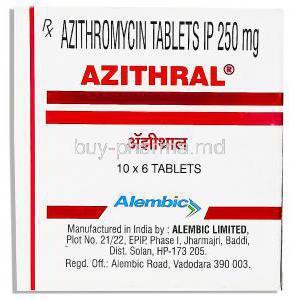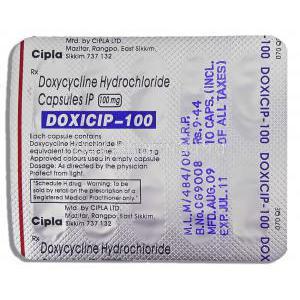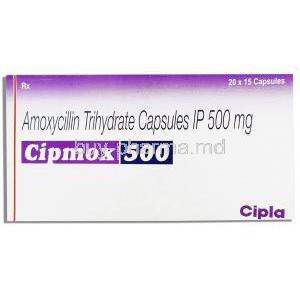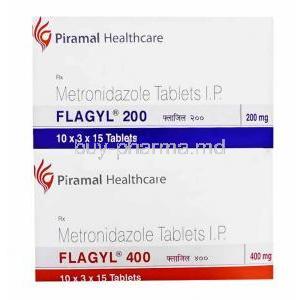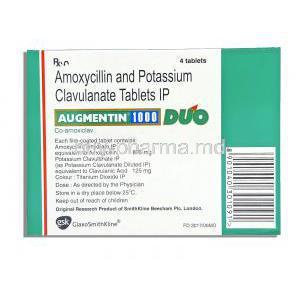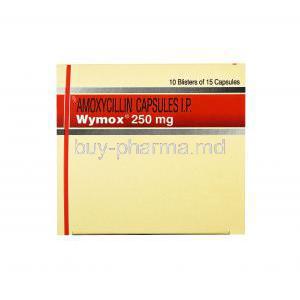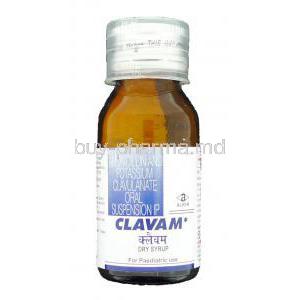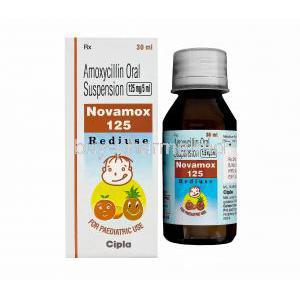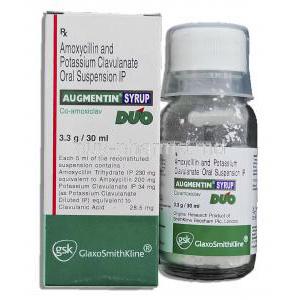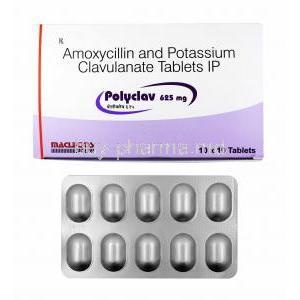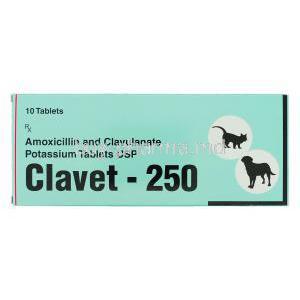Zil-O, Ofloxacin/ Ornidazole
- Introduction to Zil-O (Ofloxacin/Ornidazole)
- Composition and Active Ingredients
- Mechanism of Action: How Zil-O (Ofloxacin/Ornidazole) Works
- Approved Uses of Zil-O (Ofloxacin/Ornidazole)
- Treatment of bacterial and protozoal gastrointestinal infections
- Acute amoebic dysentery
- Giardiasis
- Travelers diarrhea with mixed bacterial-amoebic etiology
- Pelvic inflammatory disease
- Periodontitis and dental infections
- Post-surgical and gynecological infections
- Skin and soft tissue infections with anaerobic components
- Off-label and Investigational Uses of Zil-O (Ofloxacin/Ornidazole)
- Dosage and Administration Guidelines for Zil-O
- Common and Serious Side Effects of Zil-O (Ofloxacin/Ornidazole)
- Drug Interactions with Zil-O (Ofloxacin/Ornidazole)
- Warnings and Contraindications
- Important Precautions While Using Zil-O
- Careful Administration and Special Populations
- Pediatric Use and Safety
- Overdose and Emergency Management
- Handling and Storage Instructions
- Handling Precautions for Healthcare Providers and Patients
Introduction to Zil-O (Ofloxacin/Ornidazole)
Zil O is a combination medication containing ofloxacin (an antibiotic) and ornidazole (an anti-infection drug). This pairing is highly effective in situations where a patient has more than one type of infection at the same time.

By combining these two medicines, Zil O can fight a wide range of bacteria, including those that need oxygen to survive (aerobes) and those that don't (anaerobes). This reduces the risk of treatment failure when multiple bacteria are involved.
This combined approach is especially useful for complex infections, such as those in the gut and respiratory systems, where it's common for more than one type of bacteria to be present.

Overview of Zil-O combination therapy
This combined therapy is a more effective way to treat infections. By bringing together two antimicrobial agents, Zil O helps stop bacteria from developing resistance and allows it to fight a wider variety of microbes. As a result, patients often need shorter treatment times and are less likely to have the infection return, which is a significant improvement over using a single medication.
Classification: Fluoroquinolone and Nitroimidazole antibacterial agents
Ofloxacin is a fluoroquinolone antibiotic that kills bacteria by stopping a key enzyme called DNA gyrase, which bacteria need to copy their DNA.
Ornidazole, on the other hand, is a nitroimidazole antibiotic that's especially good at fighting anaerobes—bacteria that live without oxygen. It works by damaging their DNA.
By combining these two, you get a powerful pair that can tackle a wide variety of bacterial infections.
Brand names and availability across regions
Zil-O is sold under different brand names and as generic versions in various countries, with the strongest presence in South Asia, the Middle East, and Latin America. However, its use is restricted in some regions due to local antimicrobial guidelines.
Indications for use and regulatory approvals
This combination medicine can treat a variety of infections, from common to serious.
- Diarrheal diseases: This includes severe diarrhea and dysentery, which is a more serious form often accompanied by bloody stools and intense abdominal pain.
- Pelvic and vaginal infections: These include pelvic inflammatory disease and bacterial vaginosis.
- Oral infections: It can be used for dental infections as well as periodontal infections, which affect the gums and supporting bone.

- Post-operative infections: The medicine is particularly useful for infections that develop after surgery, especially those caused by bacteria that don't need oxygen.
Because of concerns about drug resistance and safety, regulations on this medication vary by country, with some governments only allowing it to be prescribed by a doctor.
Composition and Active Ingredients
Ofloxacin: Mechanism and properties
Ofloxacin is effective against many bacteria because it targets two key enzymes they need to survive: DNA gyrase and topoisomerase IV. By blocking these enzymes, ofloxacin stops bacterial cells from replicating, which ultimately kills them. It's especially powerful against Gram-negative bacteria like E. coli and Gram-positive ones like Streptococcus pneumoniae. A major benefit of ofloxacin is that it's well-absorbed when taken by mouth and can reach many different tissues, making it a highly useful treatment.
Ornidazole: Mechanism and properties
Ornidazole is an antibiotic that works in a unique way, and is most effective in oxygen-free environments, such as inside cells. When activated, it creates compounds that destroy a microbe's DNA. This makes it particularly useful for treating infections caused by bacteria like Bacteroides and protozoa like Giardia and Trichomonas.
Formulation types: Tablets, Suspension, Infusion
Zil O is available in several forms to suit different needs.
- For adults with systemic infections, doctors typically prescribe tablets.
- Suspension liquids are often used for children, as they are easier to swallow.

- In severe cases or for hospitalized patients, infusion solutions are available.
Strengths and excipients
The usual dosage is a combination of 200mg Ofloxacin and 500mg Ornidazole, in each tablet. To keep the medication stable its typically mixed with ingredients, like finely ground cellulose, starch and a touch of magnesium stearate.
Ofloxacin and Ornidazole
When it's likely that both bacteria and protozoa are causing diarrhea, doctors often prescribe a combination of ofloxacin and ornidazole. This pairing has become a standard treatment, particularly when the exact cause is unknown, because it's effective against a wide range of pathogens.
Ofloxacin and Metronidazole suspension
In some cases, a different approach is taken, using a combination of ofloxacin and metronidazole in a suspension. Both metronidazole and ornidazole are very similar in what they do, but ornidazole is often better tolerated and stays in the body longer.
Ofloxacin vs Ciprofloxacin
While ofloxacin and ciprofloxacin are both from the same family of antibiotics (fluoroquinolones), they have some key differences. Ciprofloxacin is especially effective against bacteria like Pseudomonas aeruginosa. However, ofloxacin is better at spreading throughout the body and penetrating tissues, making it a good, and often safer, choice for infections involving multiple types of bacteria.

Ciprodex vs Ofloxacin
Ciprodex is an ear drop that contains two medications: an antibiotic (ciprofloxacin) and a steroid (dexamethasone). This makes it different from other single-ingredient ear drops, like those containing only ofloxacin, which is an antibiotic used by itself. Ofloxacin is effective for ear infections where there is no inflammation or swelling that needs to be reduced with a steroid.
Mechanism of Action: How Zil-O (Ofloxacin/Ornidazole) Works
Ofloxacin: DNA gyrase inhibition and bacterial replication
Ofloxacin kills bacteria by attaching to and blocking two key enzymes, DNA gyrase and topoisomerase IV. Since bacteria need these enzymes to unspool and copy their DNA, blocking them stops the bacteria from replicating, which ultimately causes the cell to die.
Ornidazole: DNA strand breakage in anaerobic bacteria and protozoa
Ornidazole works by being converted into its form, inside bacteria, where it produces chemical byproducts that tear apart the bacterias DNA. This causes harm stopping the bacteria from reproducing and ultimately killing them.
Synergistic bactericidal effect in mixed infections
Ofloxacin and Ornidazole form a powerful team. Ofloxacin targets one group of pathogens while Ornidazole eliminates anaerobes and protozoa. This dual approach is particularly effective for complex issues like abdominal abscesses or polymicrobial diarrhea, where both types of microbes are present. By combining these two drugs, the chances of successful treatment increase, the risk of the infection returning decreases, and patients tend to recover faster. It's a potent combination that can significantly improve a person's recovery.

Approved Uses of Zil-O (Ofloxacin/Ornidazole)
Treatment of bacterial and protozoal gastrointestinal infections
Zil O is highly effective against a variety of issues, particularly those caused by a mix of bacteria and protozoa. By combining ofloxacin and ornidazole, it targets both oxygen-dependent and oxygen-free bacteria, which is key in areas with high infection rates. Many patients report feeling better quickly, with a return to normal gut function and less diarrhea.
This medication works well for short-term bouts of enteritis and is particularly useful for co-infections, where someone is infected with more than one type of protozoa. Using this combined approach also lowers the chances of the infection returning compared to using a single treatment.
Acute amoebic dysentery
Zil O is highly effective at treating amoebic dysentery, which is caused by the parasite Entamoeba histolytica in the colon. The combination is so successful because Ornidazole directly damages the parasite's DNA, while Ofloxacin handles any co-existing bacterial infections. This dual action quickly relieves common symptoms like stomach cramps, bloody stools, and fever.

Giardiasis
Giardiasis is a condition that causes bloating and ongoing diarrhea by preventing the body from absorbing nutrients. Fortunately, Zil O is typically a very effective treatment.
The medication works in two ways: Ornidazole eliminates the Giardia lamblia parasites that cause the infection, while Ofloxacin helps control the bacterial overgrowth that often accompanies it. As patients recover, they usually experience improved digestion, regain lost weight, and their bodies begin absorbing nutrients properly again.
Travelers diarrhea with mixed bacterial-amoebic etiology
Traveler's diarrhea is often caused by a combination of bacteria and parasites from contaminated food or water. Zil O is a great solution for this because it's a single medication that treats a wide range of these infections. This helps you recover faster, reduces the risk of dehydration, and is especially useful when you're in a foreign country and can't easily access multiple medicines.
Pelvic inflammatory disease
Pelvic inflammatory disease (PID) is often caused by a combination of different bacteria, making it challenging to treat. Fortunately, Zil O offers a solution by providing broad coverage.
The combination of ofloxacin and ornidazole is particularly effective because it targets a wide variety of bacteria, including Neisseria gonorrhoea. Ornidazole also helps fight the specific bacteria that can cause abscesses in the pelvis. When doctors prescribe Zil O correctly, it can significantly reduce the risk of long-term complications, such as chronic pelvic pain, infertility, and ectopic pregnancy.

Periodontitis and dental infections
Dental and gum infections are often caused by bacteria that thrive in oxygen-free environments. For dentists and oral surgeons, Zil O is an excellent solution for preventing and treating infections after dental work. Its two-part action helps preserve tissue, reduce inflammation, and speed up gum healing, leading to a smoother recovery for patients after their procedures.

Post-surgical and gynecological infections
It's common for infections to develop after surgery, especially when bacteria get into a wound. This can be particularly serious following procedures on organs, such as after a C-section or a hysterectomy.
In these situations, Zil O can offer protection against serious infections. It helps prevent potentially life-threatening bloodstream infections, the wound from reopening, and long hospital stays.
Skin and soft tissue infections with anaerobic components
Skin and soft tissue infections with a mix of microbes can be very difficult to treat. Thankfully, the combination of ofloxacin (which targets a variety of bacteria) and ornidazole (which fights bacteria that thrive without oxygen) creates a highly effective treatment. This duo is particularly useful for conditions like abscesses, cellulitis, and infected ulcers. As a result, patients experience less pus and pain, and their wounds heal more quickly.

Off-label and Investigational Uses of Zil-O (Ofloxacin/Ornidazole)
Clostridium difficile-associated diarrhea (with caution)
Zil O has been considered as a treatment for C. difficile diarrhea, but it's not a common choice. While ofloxacin and ornidazole are effective against many bacteria, using them could potentially cause more problems by disrupting the gut's balance of good and bad bacteria.
Therefore, doctors only consider this combination in rare and specific cases when standard treatments have failed. Even then, they carefully monitor the patient's response due to the risk of upsetting the body's natural microbiome. This medication is only used when a doctor decides it's the best option.
Helicobacter pylori eradication (as part of triple therapy)
Some researchers have explored using Zil O to eliminate the bacteria Helicobacter pylori. When combined with acid-reducing medications and other antibiotics, it appears to be effective at killing the germ.
The medication works because ofloxacin disrupts the bacteria's DNA, while ornidazole targets areas in the stomach lining where the germ typically hides.
While this isn't the standard treatment for H. pylori, it may be a useful alternative when the bacteria have become resistant to more common medications.
Bacterial vaginosis (with other agents)
Treating bacterial vaginosis is often tricky because it involves a mix of different bacteria, which is why a combination of treatments is usually best. Zil O has shown promise in helping to restore the balance of bacteria in the vagina.
The medication works because ofloxacin targets bacteria that can survive with or without oxygen, while ornidazole specifically fights bacteria that can only live without oxygen, which are often the main culprits in this condition. When these two medicines work together, women may experience less discharge and odor, as well as fewer recurring infections.

Chronic prostatitis with suspected mixed etiology
Chronic prostatitis is a condition that's particularly difficult to treat when both bacteria and protozoa are involved. Zil O has been studied for its ability to penetrate deep into the prostate and is effective at targeting the Gram-negative bacteria that often cause this condition. When combined with ornidazole, it also handles anaerobic bacteria. This dual action can provide significant relief for patients, easing pelvic pain, improving urination, and lowering the risk of the infection returning.

Inflammatory bowel disease with superimposed infections
For people with inflammatory bowel disease, infections can often trigger flare-ups. In some cases, Zil O is used alongside other treatments to help control these infections. The goal is to reduce harmful bacteria and other microorganisms in the gut, which can help lessen inflammation and prevent severe flare-ups.
However, this is still an experimental approach. Doctors must carefully weigh the benefits against the risks, as long-term use could disrupt the balance of healthy gut bacteria.
Dosage and Administration Guidelines for Zil-O
Standard adult dosage for each indication
The typical adult dose of Zil O is a tablet containing 200mg of ofloxacin and 500mg of ornidazole, taken twice a day. This is commonly prescribed for stomach infections, pelvic inflammatory disease, and post-surgical infections. The dosage may be increased for severe infections and can be given either by IV or by mouth.
- For simple diarrhea, the standard dose is one tablet, twice daily.
- For bacterial or protozoal dysentery, the usual treatment is one tablet twice a day for 5 to 7 days.
- For genitourinary or gynecological infections, a longer treatment period of up to 10 days may be required.
Pediatric dosing (if applicable and approved)
Using this medication for children is strictly regulated and only permitted where authorized. A liquid suspension is typically used to ensure the correct dosage, which is based on the child's weight. The standard dose is 7 to 10 mg of ofloxacin per kilogram of body weight per day, along with an equal amount of ornidazole, divided into two doses. It's crucial to follow age restrictions and carefully monitor for any potential side effects.
Timing of administration relative to meals
You can take Zil O with or without food, but taking it with a meal can help if it upsets your stomach.
It's important to avoid dairy products while on this medication, as calcium can interfere with how your body absorbs the ingredients.
Also, be sure to drink plenty of water to help your kidneys work properly and reduce the risk of kidney stones.

Duration of therapy based on infection type
The length of treatment with Zil O is not a one-size-fits-all plan and depends entirely on the infection being treated.
- For severe diarrheal illness, a typical course is 3 to 5 days.
- For amoebic dysentery or giardiasis, the treatment usually lasts 5 to 7 days.
- Infections following surgery or those affecting the genitourinary system often require 7 to 10 days.
- For chronic or very severe infections, a customized plan longer than 10 days might be necessary.
It is crucial to complete the full course of treatment, even if you start feeling better. Stopping early can lead to the infection returning and may contribute to the development of drug-resistant bacteria.
Dose adjustments for renal and hepatic impairment
When a person has kidney problems, it's crucial to adjust the dosage of medications like ofloxacin, since the kidneys are responsible for removing it from the body. This may mean giving a lower dose or extending the time between doses.
Ornidazole, however, is processed by the liver, so its dosage might need to be adjusted for patients with liver problems.
To ensure safe and effective treatment, doctors should regularly monitor both liver enzyme and kidney function tests and use the results to guide their decisions.
Common and Serious Side Effects of Zil-O (Ofloxacin/Ornidazole)
Common gastrointestinal effects (nausea, metallic taste, diarrhea)
When first taking Zil O, many people experience stomach problems, which usually get better as they continue the treatment.
Common side effects include:
- Nausea, or a queasy feeling in the stomach.
- An unpleasant, bitter taste in the mouth.
- Diarrhea, which is typically mild and goes away after the medication is stopped.

Neurological symptoms (headache, dizziness)
Neurological side effects are a possibility when taking fluoroquinolones. You might experience headaches or dizziness because these drugs can disrupt the normal movement of ions in and out of your brain cells. While these symptoms are generally mild, they can affect your ability to focus and coordinate your movements. Because of this, you should be careful when doing things that require your full attention, such as driving or operating heavy machinery.

Allergic reactions and skin rashes
Some people may have an allergic reaction to this treatment, which can range from a mild skin rash to hives. Although rare, some patients have also experienced increased sensitivity to sunlight or a severe skin condition. If you have a history of drug allergies, you will need to be carefully monitored during treatment.

Serious side effects: Tendon rupture, QT prolongation, peripheral neuropathy, seizures
Although uncommon, serious side effects can occur and require immediate medical attention.
- Tendon Damage: One major concern with fluoroquinolones is the risk of tendon damage, particularly a rupture of the Achilles tendon. This risk is higher for older adults and those taking corticosteroids.
- Heart Rhythm Issues: The medication can also disrupt the heart's rhythm, potentially leading to arrhythmias, especially if a patient is on other heart-affecting drugs or has electrolyte imbalances.
- Nerve Damage and Seizures: In rare cases, nerve damage (neuropathy) and seizures can occur. Neuropathy can cause a persistent feeling of numbness or a "pins and needles" sensation. This highlights the need for doctors to be extremely cautious when prescribing these drugs, especially to vulnerable patients.
Incidence rates and monitoring recommendations
Side effects are usually mild, affecting than one, in ten patients, and serious problems are rare. In than 1% of cases. To stay on top of things doctors often recommend heart checks for patients with a history of issues and liver tests for people who need to take the medication long term. For patients kidney function should also be monitored. It's crucial that patients are encouraged to speak up if they notice any issues, like tendon pain, irregular heartbeats or unusual neurological symptoms.
Drug Interactions with Zil-O (Ofloxacin/Ornidazole)
Interactions with antacids, multivitamins, and iron
Taking antacids containing aluminum or magnesium, or taking iron and zinc supplements at the same time as ofloxacin, can make the antibiotic less effective. These substances can bind to the ofloxacin and prevent your body from absorbing it properly. To avoid this, you should take these other medications at least two hours before or after you take ofloxacin.

Interaction with warfarin and anticoagulants
When taking ornidazole alongside warfarin or other blood thinners, there's an increased risk of bleeding because the effects of these medicines are amplified. To stay on top of things, doctors usually recommend keeping an eye on a measure called INR. It helps track how well the blood is clotting. If these medications are used together, it might be necessary to tweak the doses of the blood thinners to get the balance and avoid any problems.
Risk of QT prolongation with other agents
Taking Zil O with certain other medications, such as some antiarrhythmics, antipsychotics, and macrolide antibiotics, can increase the risk of heart rhythm problems. These drugs can lengthen the time your heart's electrical system needs to reset between beats.
When combined, this effect can sometimes trigger a dangerous irregular heartbeat called torsades de pointes, especially in people already at risk. For this reason, doctors must be cautious and monitor a patient's heart rhythm with an ECG when these medications are used together.
CYP450 enzyme involvement and metabolism
Ofloxacin and Ornidazole are processed very differently by the body. Ofloxacin is minimally affected by the liver, while Ornidazole is broken down by the liver's cytochrome P450 enzymes.
This is important because other medications can either speed up or slow down these enzymes. For example, a drug like rifampicin can make the antibiotics less effective by speeding up liver metabolism. Conversely, a medication like ketoconazole can slow metabolism down, causing the antibiotic levels to rise, which can increase the risk of side effects.
Therefore, if a patient is on multiple medications, doctors should carefully adjust the doses and closely monitor the patient's response to treatment.
Warnings and Contraindications
Black box warnings (if applicable)
Ofloxacin, a component of Zil O, belongs to a class of drugs called fluoroquinolones, which come with some serious warnings. These medications carry a risk of causing side effects that can be severe and even permanent, such as tendon rupture, nerve damage, and issues with the central nervous system. Regulatory authorities are clear that these potential risks must be carefully considered against the benefits of the treatment.

Contraindicated in patients with known hypersensitivity to fluoroquinolones or nitroimidazoles
You should not take the antibiotic Zil O if you have ever had an allergic reaction to ofloxacin or ornidazole, or to any drugs in the same families (fluoroquinolones or nitroimidazoles). Such a reaction can cause symptoms ranging from a rash and hives to difficulty breathing, and in severe cases, a life-threatening allergic reaction called anaphylaxis.
Contraindications in CNS disorders or seizure history
Individuals with epilepsy, a history of seizures, or conditions that increase the risk of seizures should avoid taking Zil O. Both ofloxacin and ornidazole can make nerve cells more excitable, which increases the risk of seizures. This is a particular concern when these drugs are combined or taken with other medications that can also trigger seizures.
Because the liver breaks down ornidazole, people with liver damage cannot safely take it. Similarly, people with kidney problems have a hard time clearing ofloxacin from their bodies, which can cause the drug to build up and increase the risk of side effects. In these cases, it's generally better to choose a different medication.

Important Precautions While Using Zil-O
Avoid alcohol due to disulfiram-like reaction
When you take ornidazole with alcohol, it can cause a disulfiram-like reaction, leading to symptoms such as flushing, a fast heartbeat, nausea, and low blood pressure. To avoid this, you should not drink alcohol while on this medication and for at least two days after your treatment has ended.
Monitoring for tendonitis or neuropathy symptoms
Fluoroquinolone antibiotics can cause serious side effects, including tendon damage or rupture. People taking these medications should watch for signs like pain, swelling, or stiffness in a tendon. Other possible side effects include nerve damage, which can cause numbness, tingling, or a burning sensation in the hands and feet. If any of these symptoms appear, it is essential to stop the medication immediately.

Avoid driving or operating machinery if dizziness occurs
Taking Zil O can cause side effects like dizziness and vertigo, which may affect your balance and coordination. Until you know how the medication affects you, it's best to avoid activities that require full attention, such as driving or operating machinery. This will help prevent accidents.
Photosensitivity precautions
If you're going to be outside it's an idea to be careful, about the sun. The treatment can make your skin a bit more sensitive, than usual and much direct sunlight might cause some problems. Wearing clothes that protect your skin and using a sunscreen can really help. Look for one that blocks a range of rays. That should make a difference.
Risk of Clostridium difficile-associated diarrhea
Antibiotics like Zil O can disrupt the balance of healthy bacteria in your gut, which may allow a harmful bacteria called Clostridium difficile to grow and cause a serious condition called colitis. If you develop persistent diarrhea while taking this medication or after you stop, you should see a doctor immediately.
Careful Administration and Special Populations
Administration in Elderly Patients
As people get older, their bodies become less efficient at processing drugs, so they may need lower doses to avoid complications. A high dose can cause the drug to build up in their system, increasing the risk of side effects. Older adults are at a higher risk of serious problems, such as tendon rupture and central nervous system issues that can cause confusion, agitation, or hallucinations.

For this reason, doctors need to pay close attention to creatinine clearance to determine how well the kidneys are working and adjust the dosage accordingly. They should also watch for any muscle or joint problems, as well as any other signs of a negative reaction.
Use in Pregnant Women and Nursing Mothers
Using Zil O during pregnancy is a concern because animal studies show that ofloxacin can cause birth defects, and ornidazole may have other harmful effects on a fetus. For this reason, the drug should only be used if there are no other options and the benefits to the mother outweigh the potential risks to the baby.
When breastfeeding, both ingredients can pass into breast milk, which could cause stomach issues or neurological problems in a newborn. For this reason, it is generally recommended that breastfeeding mothers avoid this medication unless a doctor deems it absolutely necessary.
Pediatric Use and Safety
Limited data on safety in children under 12
The use of Zil O in children under twelve is limited because there isn't enough safety data from clinical trials. Doctors might use a liquid version and adjust the dose based on the child's weight, but they do so cautiously. They will only consider this medication if other, safer options are not available and the infection poses a significant risk to the child's health.
Risk of cartilage damage and growth inhibition with fluoroquinolones
Fluoroquinolones, a class of antibiotics that includes ofloxacin, have been shown to harm the development of cartilage in growing animals, which has raised concerns about their long-term effects on the skeletal system. Since cartilage damage can be permanent and lead to future joint problems, doctors are hesitant to prescribe these drugs to children unless there is a clear medical need.

Overdose and Emergency Management
Symptoms of overdose: Confusion, convulsions, QT prolongation
An overdose of Zil O can cause serious problems with the nervous system and heart. Someone who takes too much may experience confusion, seizures, or even lose consciousness. The medication can also disrupt the heart's rhythm, which can be seen as a prolonged QT interval on an ECG. This is a serious concern because it increases the risk of dangerous arrhythmias that require immediate medical attention.
Immediate management: Gastric lavage, supportive care
When a person overdoses, the first step is to remove the drug from their system, often by pumping their stomach. They will also be given supportive care to keep their vital signs stable. In some cases, doctors may need to give medication to stop seizures. Throughout the process, the patient's heart will be monitored closely to ensure its rhythm remains normal.
No specific antidote; hemodialysis utility
There is no specific antidote for an overdose of ofloxacin or ornidazole. While dialysis can remove some ofloxacin from the blood, it is not very effective at removing ornidazole. Therefore, doctors focus on treating the patient's symptoms and providing supportive care to help them recover.

Handling and Storage Instructions
Recommended storage temperature and conditions
To keep Zil O effective it's best to store it at a room temperature. Somewhere, between 20°C and 25°C or 68°F, to 77°F. Avoid leaving it in cold places as this can damage its pharmacological properties.
Protection from moisture and direct sunlight
Exposure to moisture and direct light can break down the ingredients making them less effective. To keep everything it's an idea to leave the packaging sealed until you're ready to use it. Tablets and liquids should stay in their containers. That way they'll stay stable and work as they should.
Safe disposal practices for expired or unused medication
When its time to get rid of expired or unused Zil O don't toss it in the trash. Pour it down the drain. Patients need to be told to take medications to collection points or check with local authorities to see how to properly dispose of pharmaceuticals. This helps keep the environment from getting contaminated.

Handling Precautions for Healthcare Providers and Patients
Safe handling of tablets/suspensions to prevent contamination
When handling tablets, make sure your hands are clean. For liquid suspensions, use a dispenser that has been properly measured and calibrated. To avoid contamination, keep the equipment clean and don't let it touch anything it shouldn't. Always practice good hygiene.
Patient counseling points on adherence and full-course completion
Doctors and nurses can't stress this enough: it's crucial for patients to finish their entire course of medication. Stopping early, even if symptoms fade, can cause the infection to return and may lead to drug-resistant germs, making future treatment more difficult.
Avoiding co-administration with contraindicated substances
It is crucial for doctors to warn patients about the risks of combining Zil O with certain substances.
- Antacids containing metal ions can prevent the body from properly absorbing the medication.
- Alcohol can increase the risk of side effects.
- Some other medications, particularly those that affect heart rhythm, can also cause serious problems when taken with Zil O.
To stay safe, patients should space out their doses and always inform their doctor about all other medications they are taking.
Zil-O, Ofloxacin/ Ornidazole FAQ
- What is Ofloxacin used for?
- What is Ofloxacin?
- Ofloxacin for ear infection?
- Is Ofloxacin an antibiotic?
- Does Ofloxacin treat pink eye?
- Are Ofloxacin and Ciprofloxacin the same?
- Are Ofloxacin and Moxifloxacin the same?
- Are Ofloxacin and Ciprodex the same?
- What are Ofloxacin tablets for?
- Are Norfloxacin and Ofloxacin same?
- Can Ofloxacin treat yeast infection?
- Can Ofloxacin treat UTI?
- Can Ofloxacin be used for pink eye?
- Can Ofloxacin treat typhoid?
- Can Ofloxacin treat gonorrhea?
- Can Ofloxacin be given in pregnancy?
- Can Ofloxacin treat Staphylococcus aureus?
- Can Ofloxacin cure gonorrhea?
- Can Ofloxacin and Ornidazole treat amoeba?
- Can Ofloxacin treat staphylococcus?
- How Ofloxacin works?
- Ofloxacin how to use?
- Ofloxacin how many times a day?
- Ofloxacin what type of antibiotic?
- Ofloxacin what kind of antibiotic?
- Ofloxacin what not to eat?
- What is Ofloxacin used to treat?
- Ofloxacin when pregnant?
- When does Ofloxacin start working?
- When to take Ofloxacin and Ornidazole tablets?
- Ofloxacin which class of drug?
- Will Ofloxacin treat inner ear infection?
- Will Ofloxacin treat a stye?
- Will Ofloxacin treat pink eye?
- Will Ofloxacin help with clogged ears?
- Will Ofloxacin treat middle ear infection?
- Will Ofloxacin treat swimmer's ear?
- Will Ofloxacin treat otitis media?
- Will Ofloxacin treat chlamydia?
- Will Ofloxacin treat gonorrhea?
- Ofloxacin for loose motion?
- Ofloxacin for typhoid?
- Ofloxacin for diarrhea?
- Ofloxacin for dogs dosage?
- Ofloxacin is bacteriostatic or bactericidal?
- Are Ornidazole and Metronidazole same?
- What are Ornidazole tablets used for?
- Can Ornidazole and Metronidazole be taken together?
- Can Ornidazole be used for loose motion?
- Can Ornidazole treat UTI?
- Can Ornidazole be taken empty stomach?
- Can Ornidazole treat loose motion?
- Can Ornidazole treat yeast infection?
- Can Ornidazole treat gonorrhea?
- Can Ornidazole treat typhoid?
- Can Ornidazole treat Staphylococcus aureus?
- Can Ornidazole treat stomach infection?
- Can Ornidazole treat amoeba?
- Can Ornidazole treat trichomoniasis?
- How Ornidazole works?
- Ornidazole how many days?
- Ornidazole how many times a day?
- How long does Ornidazole take to work?
- What is Ornidazole used for?
- What does Ornidazole treat?
- What is Ornidazole and Ofloxacin used for?
- What is Ornidazole used to treat?
- What does Ornidazole and Ofloxacin treat?
- What does Ornidazole do?
- Ornidazole when to take?
- Ornidazole which class of drug?
- Can Ornidazole be taken empty stomach?
- Which is better Ornidazole or Tinidazole?
- Can Ornidazole treat gonorrhea?
- Can Ornidazole treat Staphylococcus aureus?
- Can Ornidazole treat trichomoniasis?
- Ornidazole for kids?
- Ornidazole for UTI?
- Ornidazole for tooth infection?
- Ornidazole for dogs?
- Ornidazole for diarrhea?
- Ornidazole for stomach pain?
- Ornidazole for cats?
- Ornidazole for teeth?
- Ornidazole for BV?
- Ornidazole for typhoid?
- Ornidazole for throat infection?
- Ornidazole for trichomoniasis?
- Ornidazole is antibiotic?
- Ornidazole is safe in pregnancy?
- Is Ornidazole used for loose motion?
- Is Ornidazole safe in breastfeeding?
- Ornidazole is antifungal?
- Is Ornidazole carcinogenic?
- Is Ornidazole safe for kidneys?
- Is Ornidazole nephrotoxic?
What is Ofloxacin used for?
Ofloxacin is an antibiotic used to treat various infections. It is often prescribed for respiratory infections like bronchitis and pneumonia, as well as for urinary tract, skin, and sexually transmitted infections. Additionally, it can be used to treat certain eye and ear infections.
What is Ofloxacin?
Ofloxacin belongs to the fluoroquinolone class of antibiotics. It works by disrupting essential bacterial processes, specifically targeting the enzymes DNA gyrase and topoisomerase IV. These enzymes are crucial for bacterial DNA replication and repair, and without them, bacteria cannot reproduce or fix damage to their genetic material.
Ofloxacin for ear infection?
Ofloxacin ear drops are commonly prescribed for ear infections such as otitis externa and chronic otitis media. Since these conditions can be difficult to treat, a targeted option like Ofloxacin is often preferred.
Is Ofloxacin an antibiotic?
Ofloxacin is a type of antibiotic that falls under the fluoroquinolone category. Its designed to either kill bacteria or stop them from growing.
Does Ofloxacin treat pink eye?
Ofloxacin ophthalmic solution is often used to treat a condition. Bacterial conjunctivitis or what most, peoplecall pink eye.
Are Ofloxacin and Ciprofloxacin the same?
Ofloxacin and Ciprofloxacin are two fluoroquinolone antibiotics despite being part of the family and sharing some common ground in their applications.
Are Ofloxacin and Moxifloxacin the same?
Ofloxacin and Moxifloxacin are two fluoroquinolones. What sets Moxifloxacin apart is that its generally viewed as an version effective, against a wider range of bacteria.
Are Ofloxacin and Ciprodex the same?
Ofloxacin is actually an antibiotic whereas Ciprodex is a combination of two medications; Ciprofloxacin, an antibiotic and Dexamethasone a steroid. Ciprodex is typically used to treat ear infections, which sets it apart, from Ofloxacin.
What are Ofloxacin tablets for?
Ofloxacin tablets are a treatment option, for infections that spread throughout the body. They're often prescribed for tract infections well as pneumonia, bronchitis and prostatitis. In some cases they're also used to treat transmitted infections.
Are Norfloxacin and Ofloxacin same?
Norfloxacin and Ofloxacin aren't the thing. They're two types of fluoroquinolones. The key difference lies in their effectiveness, against bacteria with Ofloxacin offering a wider range of antibacterial coverage.
Can Ofloxacin treat yeast infection?
Ofloxacin isn't the medication, for yeast infections. Its designed to work against bacteria, not fungi.
Can Ofloxacin treat UTI?
Doctors often prescribe Ofloxacin to treat tract infections long as the bacteria causing the infection are susceptible, to the medication.
Can Ofloxacin be used for pink eye?
Ofloxacin ophthalmic solution is actually used to treat a condition. Bacterial conjunctivitis, which most people know as pink eye.
Can Ofloxacin treat typhoid?
Ofloxacin can be used to treat typhoid fever, which is caused by Salmonella typhi. However it's crucial to keep an eye, on resistance patterns when deciding on a course of treatment.
Can Ofloxacin treat gonorrhea?
Ofloxacin used to be a go-to treatment, for gonorrhea. These days its not the option anymore. That's because the bacteria that cause gonorrhea have become resistant to it, so doctors don't recommend it as the line of defense in a lot of places.
Can Ofloxacin be given in pregnancy?
When a woman is pregnant, doctors usually try to avoid prescribing Ofloxacin. This is because there are worries that the drug could interfere with the development of the babys cartilage. However if the benefits of taking the medication are thought to be more important than the risks, it might still be used.
Can Ofloxacin treat Staphylococcus aureus?
Ofloxacin might be effective, against some types of Staphylococcus aureus bacteria. Its not very reliable because a lot of these germs are resistant to it the methicillin resistant kind.
Can Ofloxacin cure gonorrhea?
Ofloxacin used to be an option. Nowadays its not very reliable, for treating gonorrhea because so many strains have become resistant, to it.
Can Ofloxacin and Ornidazole treat amoeba?
In some cases, doctors prescribe a combination of two medicines, Ofloxacin and Ornidazole to tackle infections that are caused by both bacteria and protozoa like amoebiasis. This mix of bacteria and protozoa can lead to some infections, so the dual approach is often necessary.
Can Ofloxacin treat staphylococcus?
Ofloxacin is effective against strains of Staphylococcus. Only if the specific strain is susceptible. The problem is that many Staphylococcus strains have developed resistance so it's crucial to do susceptibility testing before using this treatment.
How Ofloxacin works?
Ofloxacin stops bacteria from multiplying by blocking the enzymes that help them replicate their DNA. It targets two enzymes, DNA gyrase and topoisomerase IV which are essential for bacteria to copy their genetic material. Without these enzymes, the bacteria can't. They eventually die.
Ofloxacin how to use?
To ensure ofloxacin is effective, you must follow your doctor's instructions precisely. This includes taking the correct form of the medication—tablets, eye drops, or ear drops—for the exact dose and duration prescribed. The specific amount and length of treatment will depend on the type and severity of your infection.
Ofloxacin how many times a day?
The usual dose of ofloxacin can be taken once or twice a day. This really depends on what kind of infection its being used for and how bad it's a doctor will decide the best schedule.
Ofloxacin what type of antibiotic?
Ofloxacin is a type of antibiotic known as a fluoroquinolone. It kills bacteria by stopping them from replicating their DNA, which's essential, for their survival. In terms it disrupts the way bacteria reproduce ultimately leading to their demise.
Ofloxacin what kind of antibiotic?
Ofloxacin is a type of antibiotic that works against a range of bacteria including many of the gram kind and some gram positive ones. It's part of a class of drugs known as fluoroquinolones which're pretty effective, at fighting off these types of infections.
Ofloxacin what not to eat?
When you're taking Ofloxacin, some things to keep in mind. It's an idea to steer clear of dairy products antacids or any supplements that have calcium, magnesium, iron or zinc, in them around the time you take your dose. The reason for this is that they can interfere with how your body absorbs the medication. It's not that you can't have these things all try not to have them too close, to when you're taking Ofloxacin.
What is Ofloxacin used to treat?
Ofloxacin is an antibiotic that's prescribed for a variety of infections, including those of the tract, lungs, and skin. It's also effective against infections of the eyes and ears. Additionally, it is sometimes used to treat transmitted diseases.
Ofloxacin when pregnant?
Pregnant women are usually advised to avoid taking Ofloxacin as it may pose a risk to the development of their babys cartilage. However if the benefits of the medication are considered important, than the risks it might still be prescribed.
When does Ofloxacin start working?
It usually doesn't take long for ofloxacin to start kicking in. You can expect to see some effect within a few hours. But for the symptoms to really start easing up it can take anywhere from a day to three days, which varies depending on the type of infection being treated.
When to take Ofloxacin and Ornidazole tablets?
It is generally recommended to take Ofloxacin and Ornidazole combination tablets after eating as this can help minimize any stomach upset. The key is to stick to the dosage and follow the doctors instructions carefully.
Ofloxacin which class of drug?
Ofloxacin is a type of antibiotic that falls under the fluoroquinolone group.
Will Ofloxacin treat inner ear infection?
For infections deep in the ear doctors may prescribe ofloxacin ear drops. However if the infection is severe, patients might need to take medication that works throughout their body.
Will Ofloxacin treat a stye?
Generally, ofloxacin isn't the go-to treatment for a stye. Most of the time, these pesky eye infections clear up on their own, without needing antibiotics. That being said, if the infection starts to spread a doctor might prescribe some antibiotics to help get things under control.
Will Ofloxacin treat pink eye?
Ofloxacin ophthalmic solution is actually used to treat a condition. Bacterial conjunctivitis, which is actually just a fancy term for pink eye.
Will Ofloxacin help with clogged ears?
Ofloxacin won't help with ears, from wax or fluid build up. Its effectiveness is limited to fighting infections.
Will Ofloxacin treat middle ear infection?
In some instances, Ofloxacin can be an option for treating otitis media, especially when there's ear drainage involved or it's a chronic infection.
Will Ofloxacin treat swimmer's ear?
Ofloxacin ear drops are often the go-to treatment for swimmers' ear also known as otitis externa.
Will Ofloxacin treat otitis media?
For types of ear infections, like otitis media where the eardrum is perforated or there's an infection ofloxacin might be a good option. This would be, under the guidance of a doctor, who can determine the course of treatment.
Will Ofloxacin treat chlamydia?
Ofloxacin can work against chlamydia. Doctors usually don't prescribe it as the option because there's a risk the bacteria might already be resistant to it.
Will Ofloxacin treat gonorrhea?
Gonorrhea used to be treated with ofloxacin. Resistance to the antibiotic became so common that it's no longer the go to treatment.
Ofloxacin for loose motion?
Loose motion can be a nuisance. If it's caused by bacteria a doctor might prescribe Ofloxacin. However, it's crucial to confirm the cause of the diarrhea before taking this medication. It's not something you can just take without knowing what's going on.
Ofloxacin for typhoid?
When it comes to treating typhoid fever caused by Salmonella typhi ofloxacin is one option. That being said, it's crucial to check the resistance patterns to ensure this antibiotic will actually be effective.
Ofloxacin for diarrhea?
In cases where bacterial diarrhea's severe doctors might prescribe ofloxacin to tackle the infection. Only if the bacteria causing the illness are sensitive, to this type of antibiotic.
Ofloxacin for dogs dosage?
When it comes to animals ofloxacin can be an option, in care. For dogs however figuring out the right dose is a bit more complicated. It really depends on their size and whats going on with their health so a vet needs to determine the amount.
Ofloxacin is bacteriostatic or bactericidal?
Ofloxacin is a type of antibiotic that kills bacteria rather than just inhibiting their growth. It does this by disrupting the bacteria's ability to replicate their DNA, a process essential for their survival. Because it directly kills the bacteria, ofloxacin is classified as a bactericidal drug.
Are Ornidazole and Metronidazole same?
Although both are nitroimidazoles, Ornidazole and Metronidazole are not the same drug. They are similar in that they both treat infections caused by protozoa and anaerobic bacteria.
What are Ornidazole tablets used for?
Ornidazole is used to treat a variety of parasitic and bacterial infections, including amoebiasis, giardiasis, and trichomoniasis. It is also effective for bacterial vaginosis and certain other bacterial infections, particularly those that are resistant to other treatments.
Can Ornidazole and Metronidazole be taken together?
These medications don't often get prescribed at the time mainly because they work in ways. Generally putting them together doesn't do much to improve the outcome.
Can Ornidazole be used for loose motion?
Ornidazole can be used to treat motion particularly when its caused by protozoal infections, like amoebiasis or giardiasis.
Can Ornidazole treat UTI?
Ornidazole is not typically used for urinary tract infections (UTIs) because it's highly effective against protozoa and anaerobic bacteria, not the types of bacteria that are the usual cause of UTIs.
Can Ornidazole be taken empty stomach?
To get the most out of Ornidazole, it's usually best to take it after eating. This helps minimize the chances of stomach irritation. That being said, if you need to you can take it on a stomach. It's not ideal. Its doable.
Can Ornidazole treat loose motion?
Ornidazole is often used to treat motion when it's caused by kinds of infections like those brought on by amoebas or giardiasis.
Can Ornidazole treat yeast infection?
Ornidazole isn't effective, against yeast infections. Its designed to combat protozoa and anaerobic bacteria so it doesn't work on infections, like yeast.
Can Ornidazole treat gonorrhea?
Ornidazole just isn't the medicine, for treating gonorrhea. The reason is simple; it doesn't work against the bacteria that causes the disease, Neisseria gonorrhoeae.
Can Ornidazole treat typhoid?
Ornidazole isn't typically used to treat typhoid fever. The reason for this is that typhoid is caused by a type of bacteria Salmonella typhi. It usually requires antibiotics to effectively cure the infection.
Can Ornidazole treat Staphylococcus aureus?
Ornidazole does not help when it comes to dealing with Staphylococcus aureus. The thing is, it is primarily designed to take on protozoa and anaerobic bacteria so it is not really suited for tackling this type of bacteria.
Can Ornidazole treat stomach infection?
Ornidazole can help with stomach infections those triggered by microorganisms, like protozoa or anaerobic bacteria. However it's not the choice, for fighting common bacterial infections that affect the stomach.
Can Ornidazole treat amoeba?
Ornidazole does the trick when it comes to treating amoebiasis and doctors often prescribe it for both intestinal cases.
Can Ornidazole treat trichomoniasis?
Trichomoniasis, a transmitted infection, can be effectively treated with Ornidazole, which targets the parasite Trichomonas vaginalis that causes the infection.
How Ornidazole works?
Ornidazole essentially kills off microbes by messing with their DNA. This affects protozoa and anaerobic bacteria ultimately causing them to die off and clearing up the infection.
Ornidazole how many days?
Ornidazole treatments can last anywhere, from a day to a week and a half longer all depending on what kind of infection's being treated and how bad it is.
Ornidazole how many times a day?
The usual dose of Ornidazole is once or twice a day, depending on what a doctor recommends.
How long does Ornidazole take to work?
Ornidazole can start to take effect in a few hours. It usually doesn't take long to notice an improvement, in symptoms. Within a day or two.
What is Ornidazole used for?
Ornidazole is a medication used to treat infections caused by various microorganisms, including amoebiasis, giardiasis, and trichomoniasis. It is also effective against certain anaerobic bacteria—those that live in low-oxygen environments—which can be hard to treat.
What does Ornidazole treat?
Ornidazole is a medication used to treat a range of infections caused by protozoa and anaerobic bacteria. It is effective against:
- Amoebiasis, an intestinal infection.
- Giardiasis, another intestinal infection.
- Trichomoniasis, a sexually transmitted infection.
- Bacterial vaginosis, a vaginal condition.
What is Ornidazole and Ofloxacin used for?
For mixed infections involving both bacteria and protozoa, doctors often use a combination of Ornidazole and Ofloxacin. This pairing has proven effective for a variety of conditions, from gut issues to gynecological infections, allowing healthcare providers to treat complex infections more comprehensively.
What is Ornidazole used to treat?
Ornidazole is a treatment, for kinds of infections including amoebiasis, giardiasis and trichomoniasis. Its also used to combat vaginosis and infections caused by bacteria.
What does Ornidazole and Ofloxacin treat?
For infections caused by a mix of protozoa, anaerobic bacteria, and aerobic bacteria, doctors often prescribe a combination of Ornidazole and Ofloxacin. This dual treatment effectively targets all three types of microbes, providing a comprehensive approach to clearing up the infection.
What does Ornidazole do?
Ornidazole is a drug that gets rid of parasites and bacteria that thrive in oxygen environments. It works by targeting their ability to replicate essentially disrupting their DNA. This process ultimately leads to the parasite or bacteria being eliminated and the infection is cleared up.
Ornidazole when to take?
For best results, you should take Ornidazole after a meal. This helps your body absorb the medication better and can reduce the chance of an upset stomach.
Ornidazole which class of drug?
Ornidazole is a type of medicine that falls under a group of agents known as nitroimidazoles.
Can Ornidazole be taken empty stomach?
Ornidazole can be taken without eating. Its usually best to take it after a meal to avoid getting a stomach.
Which is better Ornidazole or Tinidazole?
Both Ornidazole and Tinidazole are antibiotics in the same drug family. A key difference is that Tinidazole often works faster, allowing for a shorter treatment time. In contrast, Ornidazole may be a better choice for difficult infections where bacteria are resistant to other treatments.
Can Ornidazole treat gonorrhea?
Ornidazole just doesn't work for gonorrhea. It's not effective all, against the bacteria that cause the infection Neisseria gonorrhoeae.
Can Ornidazole treat Staphylococcus aureus?
Ornidazole isn't effective, against Staphylococcus aureus. The reason, for this is simple; it just doesn't work on bacteria.
Can Ornidazole treat trichomoniasis?
Ornidazole is a treatment, for trichomoniasis, which is typically caused by an infection, with Trichomonas vaginalis.
Ornidazole for kids?
For kids a doctor might prescribe Ornidazole if they have a kind of infection caused by protozoa. But the dose needs to be just right so a pediatrician has to figure that out.
Ornidazole for UTI?
Ornidazole isn't usually the go to treatment, for tract infections. Most of the time these infections are caused by bacteria that thrive in oxygen environments whereas Ornidazole is better, at tackling protozoa and bacteria that don't need oxygen to survive.
Ornidazole for tooth infection?
For infections caused by anaerobic bacteria ornidazole can be an option though its often paired with antibiotics to cover more ground.
Ornidazole for dogs?
In the world of care Ornidayzole is an option, for treating infections in dogs. Specifically those caused by protozoa or anaerobes. However figuring out the right dose is key. Thats something a veterinarian needs to decide.
Ornidazole for diarrhea?
When it comes to tackling diarrhea brought on by kinds of infections Ornidazole is a choice. Specifically it's effective, against protozoal infections. Think amoebiasis or giardiasis. On the hand it doesn't do much for non protozoal based diarrhea.
Ornidazole for stomach pain?
If your stomachs hurting and its because of a protozoal or anaerobic infection ornilazole might actually get to the root of the problem. Help sort it out even though its not what you'd typically take for a stomachache.
Ornidazole for cats?
If a cat gets a type of infection caused by kinds of organisms like protozoa or anaerobic bacteria the vet might prescribe a medicine called ornidazole. It's essential that the vet is, in charge of giving this medication as they can make sure its used correctly.
Ornidazole for teeth?
In some cases Ornidazole is used to help treat infections particularly when the problem is thought to be caused by a type of bacteria that thrives without oxygen.
Ornidazole for BV?
Ornidazole is actually pretty effective, against vaginosis. It works by targeting the bacteria that contribute to the condition.
Ornidazole for typhoid?
When it comes to treating typhoid fever ornidazole just doesn't cut it. This particular illness calls for something, with a bit punch. Antibiotics that can take on Salmonella typhi.
Ornidazole for throat infection?
Ornidazole isn't usually the go to treatment, for throat infections. That's unless the infection is caused by a type of bacteria that thrives in low oxygen environments, a scenario that doesn't come up all that often.
Ornidazole for trichomoniasis?
Ornidazole is an treatment, for trichomoniasis, which is an infection caused by the parasite Trichomonas vaginalis. Its commonly used to clear up this type of infection.
Ornidazole is antibiotic?
Ornidazole falls into a class of medicines known as antimicrobials and specifically it's part of the nitroimidazole family. This groups it, with some antibiotics even though its used to treat kinds of infections.
Ornidazole is safe in pregnancy?
When it comes to pregnancy ornidazole is a treatment that should be approached with care. It's not the first choice, for mothers since theres less information available about its safety compared to other options. Essentially it should only be used if a doctor decides it's necessary.
Is Ornidazole used for loose motion?
Ornidazole is sometimes given to people who have motion caused by infections specifically those brought on by protozoa like amoebiasis and giardiasis.
Is Ornidazole safe in breastfeeding?
When taking ornidazole it's possible that the drug could end up in breast milk. For that reason women who are breastfeeding should talk to their doctor before using it. The doctor will help figure out whether the benefits of taking the medication outweigh any risks to the baby.
Ornidazole is antifungal?
Ornidazole isn't used to treat infections. It's actually effective, against protozoa and bacteria that thrive in low oxygen environments. It doesn't target fungi.
Is Ornidazole carcinogenic?
Studies, in humans haven't found any link, between Ornidazole and cancer although we don't have a lot of information on its long term effects.
Is Ornidazole safe for kidneys?
Ornidazole is usually gentle, on the kidneys. However people, with kidney problems might need to take a dose to avoid any issues.
Is Ornidazole nephrotoxic?
Patients, with kidney problems should use ornidazole with caution. Only under the guidance of a doctor even though it doesn't seem to be harmful, to the kidneys.

